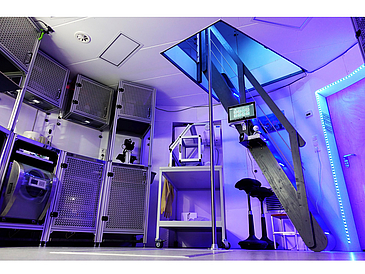Christiane Heinicke, Solmaz Adeli, Mickael Baqué, Giuseppe Correale, Miranda Fateri, Steven Jaret, Nina Kopacz,
Jens Ormö, Lucie Poulet, Cyprien Verseux
Advances in Space Research 68 (2021)
doi: https://doi.org/10.1016/j.asr.2021.04.047
Humans are once again preparing to leave Earth and land on the surface of another planetary body. The two objects high on the list for permanent bases are the Moon and Mars. Both have been at the center of attention of many recent spaceflight activities, albeit these have so far been uncrewed. If humans indeed land on either one of them, science can potentially benefit tremendously.
In the past, most spaceflight missions have been implemented by adding scientific instruments after most of the engineering work is already finished. This has often limited scientific studies to relatively scattered, insular topics. However, if prepared appropriately, a research laboratory on either the Moon or Mars can help address scientific questions thoroughly and at a fundamental level.
In this paper we review the main scientific questions relating to the Moon that are still open and develop an overview of the instrumentation that would be necessary for a human astronaut inside a lunar laboratory to help answer these questions. Our primary focus is the Moon, however, we include an outlook to Mars, since we assume that the Moon not only provides a valuable testbed for many technologies to be used on Mars, but that both can be studied with the same habitat laboratory after some specific adaptations.
The research areas we focus on are related to (a) non-living matter (geophysics, geology, materials science), (b) extraterrestrial life (from chemistry of organic carbon compounds to astrobiology), and (c) life inside the human habitat (bioregenerative life-support systems, microbiomes, human physiology). We identify synergies between disciplines, in order to provide a list of priorities to mission planners, and provide a guideline of where further development of equipment would be desirable.
© 2021 COSPAR. Published by Elsevier B.V. All rights reserved.

